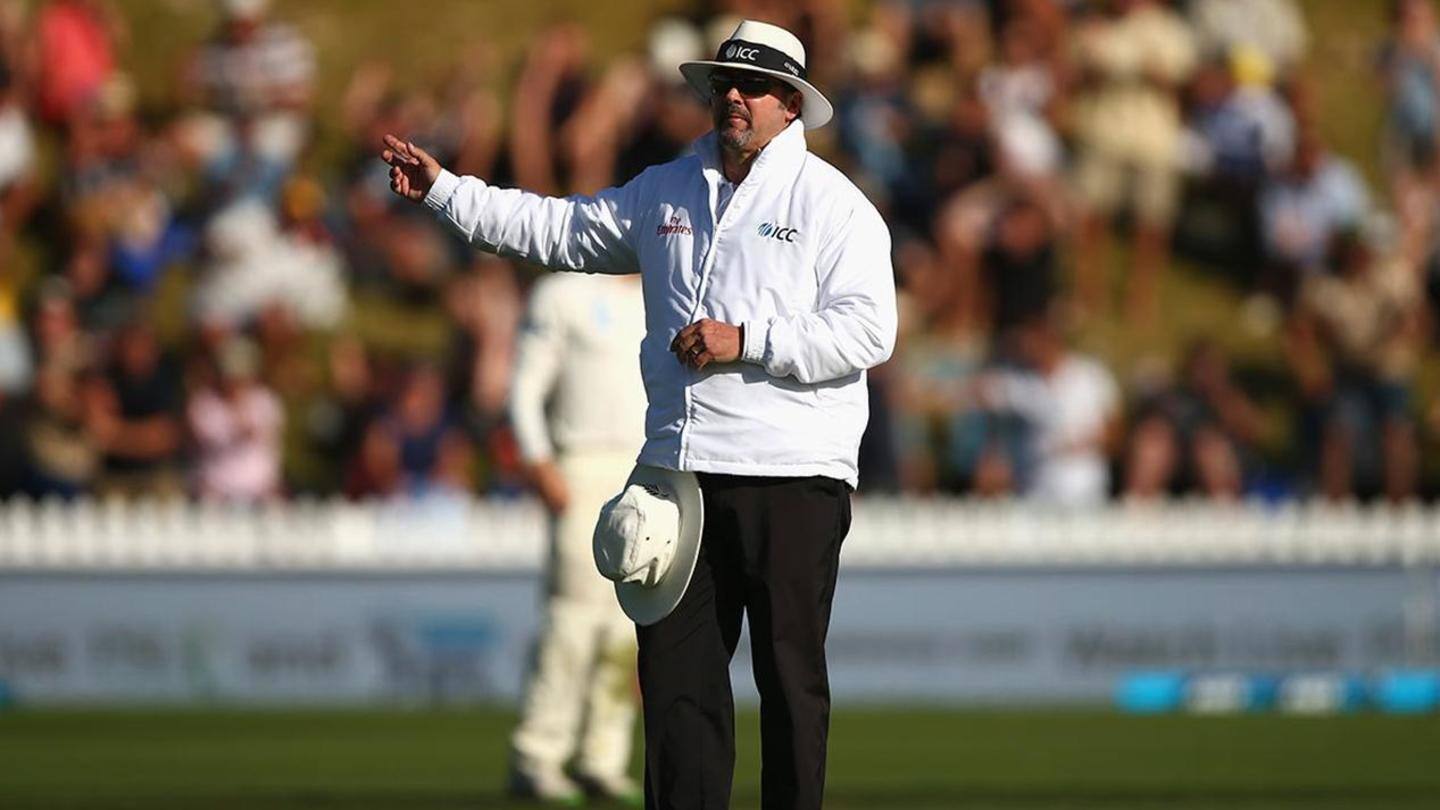
TV umpire set to officiate front-foot no-balls
What's the story
The on-field umpires in the first Test between England and West Indies faced scrutiny after three wickets were overturned by the third official when retrospectively checking the bowler's front-foot.
Owing to these errors, the days of on-field umpires being responsible for calling front-foot no-balls are numbered.
The TV umpire is set to take over the same.
Here we present further details.
Test Championship
Ongoing World Test Championship will not see any change
According to a report in The Independent, the decision on front-foot no-balls by the television umpire, used in this year's Women's T20 World Cup, will be adopted full time for leading International Cricket Council (ICC) competitions.
However, the ongoing ICC World Test Championship will continue to see on-field umpires make decisions.
The status quo will prevail for now as the playing conditions were agreed.
Trial
TV umpire monitoring front-foot no-ball was in trial
TV umpire checking front-foot no-ball was a success during the women's T20 tournament.
This was followed by a comprehensive trial across 12 ODIs.
Notably, the ICC has given the green light for the technology to be used in the inaugural World Cup Super League - the two-year ODI competition which was set to begin in May before the coronavirus pandemic put it on hold.
AUS vs PAK
When on-field umpires had failed to call 21 no-balls
On-field umpires have come under intense scrutiny of making close front-line decisions.
Last year, the Test match between Australia and Pakistan in Brisbane saw 21 uncalled no-balls bowled by Pakistani bowlers in the space of just two sessions.
This was highlighted after pictures were collected by the Seven Network broadcast.
System
What is the process for the television umpire?
Under the system, the television umpire monitors the front-foot with a Hawkeye freezeframe then a super slow-motion replay.
He later signals the on-field umpire through a buzzer that the bowler has overstepped.
At that point, the on-field umpire unfurls his arm to indicate about the no-ball, eight seconds after the delivery.
This is well before the bowler is set to take the mark.
Shortcoming
When TV umpire Richard Illingworth accounted for a shortcoming
The practice of TV umpires checking the front-foot no-ball has been a common feature ever since DRS was introduced in 2008.
However, the shortcoming of the procedure was brought into the spotlight when Richard Illingworth incorrectly called Doug Bracewell for overstepping.
This saw Adam Voges get a lifeline. The Aussie batsman had gone on to score a series-defining 239.